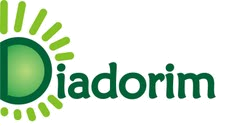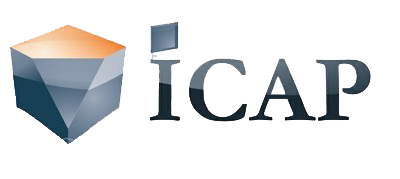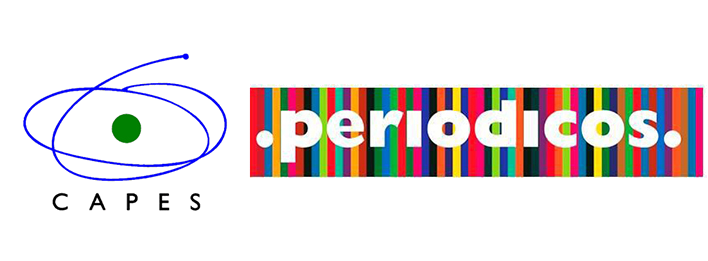Marketing de conteúdo digital como influenciador no processo de planejamento de viagens
Uma análise a partir do Technology Acceptance Model estendido
DOI:
https://doi.org/10.29149/mtr.v8i2.7357Palavras-chave:
marketing de contéúdo digital, turismo, technology acceptance model, planejamento de viagensResumo
Em meio às constantes transformações do marketing para desenvolver estratégias que cheguem ao tão diversificado público consumidor, o marketing de conteúdo digital surge, no mercado e na literatura acadêmica, como uma técnica inovadora para a divulgação de bens e serviços, especialmente porque a publicidade tradicional já não cumpre seu papel como antes, e o consumidor, muitas vezes, possui consciência do “papel intrusivo” que ela desempenha. O presente estudo visa agregar conhecimento no que se refere ao impacto do marketing de conteúdo digital (MCD) no comportamento do consumidor turístico, mais especificamente enquanto uma ferramenta tecnológica para auxiliar no planejamento de viagens. Para tanto, foi desenvolvido um estudo exploratório-descritivo, com resultados quantitativos, a partir de uma pesquisa experimental com possíveis viajantes a dois destinos brasileiros: Morro de São Paulo e Ilha de Boipeba/BA. Com isso, foi utilizada, para a análise, uma versão estendida do Technology Acceptance Model – TAM. As hipóteses foram testadas por meio da modelagem de equações estruturais, no software AMOS 22. Como principais dimensões que impactam a atitude em utilizar o MCD estão a “utilidade percebida”, proveniente do modelo original, e a “conveniência percebida”, proveniente da extensão proposta. Também foi verificada a relação positiva entre “atitude” e “intenção” de utilizar o MCD, as quais se configuram como as principais dimensões dependentes do modelo. Portanto, pode-se inferir que o modelo proposto na presente pesquisa representa consideravelmente os fatores que influenciam na atitude e intenção de usuários utilizarem materiais de MCD para planejarem viagens para destinos turísticos.
Referências
Aguiar, C. V. N., & Bastos, A. V. B. (2013). Tradução, adaptação e evidências de validade para a medida de conflito trabalho-família. Avaliaçao Psicologica: Interamerican Journal of Psychological Assessment, 12(2), 203-212.
Assaker, G. (2020). Age and gender differences in online travel reviews and user-generated-content (UGC) adoption: extending the technology acceptance model (TAM) with credibility theory. Journal of Hospitality Marketing & Management, 29(4), 428-449.
Boboc, R. G., Chiriac, R. L., & Antonya, C. (2021). How Augmented Reality Could Improve the Student’s Attraction to Learn Mechanisms. Electronics, 10(2), 175.
Bu, Y., Parkinson, J., & Thaichon, P. (2020). Digital content marketing as a catalyst for e-WOM in food tourism. Australasian Marketing Journal (AMJ).
Cicha, K., Rizun, M., Rutecka, P., & Strzelecki, A. (2021). COVID-19 and Higher Education: First-Year Students’ Expectations toward Distance Learning. Sustainability, 13(4), 1889.
Chang, C. C., Yan, C. F., & Tseng, J. S. (2012). Perceived convenience in an extended technology acceptance model: Mobile technology and English learning for college students. Australasian Journal of Educational Technology, 28(5), 809-826.
Chin, W. W. (2010). How to write up and report PLS analyses. In: VINZI, V. E.; et al. (Eds.). Handbook of Partial Least Squares: Concepts, Methods and Applications. London, New York: Springer, 655-690.
Chung, N., Han, H., & Joun, Y. (2015). Tourists’ intention to visit a destination: The role of augmented reality (AR) application for a heritage site. Computers in Human Behavior, 50, 588-599.
Cho, Y. C., & Sagynov, E. (2015). Exploring factors that affect usefulness, ease of use, trust, and purchase intention in the online environment. International Journal of Management & Information Systems (IJMIS), 19(1), 21-36.
Cohen, J.; Cohen, P.; West, S. G.; & Aiken, L. S. (2003). Applied multiple regression/correlation analysis for the behavioral scienses. 3. Ed. New Jersey: 425-436.
Davis, F. D. (1989). Perceived usefulness, perceived ease of use, and user acceptance of information technology. MIS quarterly, 319-340.
Davis, F. D., Bagozzi, R. P., & Warshaw, P. R. (1992). Extrinsic and intrinsic motivation to use computers in the workplace 1. Journal of applied social psychology, 22(14), 1111-1132.
De Souza, J., Mendes-Filho, L., & Buhalis, D. (2020). Evaluating the effectiveness of tourist advertising to improve the competitiveness of destinations. Tourism Economics, 26(6), 1001-1020.
Dwivedi, Y. K., Rana, N. P., Jeyaraj, A., Clement, M., & Williams, M. D. (2019). Re-examining the unified theory of acceptance and use of technology (UTAUT): Towards a revised theoretical model. Information Systems Frontiers, 21(3), 719-734.
Elkaseh, A. M., Wong, K. W., & Fung, C. C. (2016). Perceived ease of use and perceived usefulness of social media for e-learning in Libyan higher education: A structural equation modeling analysis. International Journal of Information and Education Technology, 6(3), 192.
Gangwar, H., Date, H., & Ramaswamy, R. (2015). Understanding determinants of cloud computing adoption using an integrated TAM-TOE model. Journal of enterprise information management, 28(1), 107-130.
Geng, R., Wang, S., Chen, X., Song, D., & Yu, J. (2020). Content marketing in e-commerce platforms in the internet celebrity economy. Industrial Management & Data Systems, 120(3), 464-485.
Gil, A. C. (2002). Como elaborar projetos de pesquisa. 4. ed. São Paulo: Atlas.
Hair, J.; Black, W.; Babin, B.; Anderson, R. & Tatham, R. (2009). Análise multivariada de dados [recurso eletrônico]; tradução Adonai Schlup Sant’Anna. – 6. ed. – Dados eletrônicos. – Porto Alegre: Bookman.
Himang, M. M., Himang, C. M., Ceniza, A. M., & Ocampo, L. (2021). Using an Extended Technology Acceptance Model for Online Strategic Video Games: A Case of Multiplayer Online Battle Arena (MOBA). International Journal of Technology and Human Interaction (IJTHI), 17(1), 32-58.
Holliman, G., & Rowley, J. (2014). Business to business digital content marketing: marketers’ perceptions of best practice. Journal of research in interactive marketing, 8(4), 269-293.
Hsu, H. H., & Chang, Y. Y. (2013). Extended TAM model: Impacts of convenience on acceptance and use of Moodle. Online Submission, 3(4), 211-218.
Järvinen, J., & Taiminen, H. (2016). Harnessing marketing automation for B2B content marketing. Industrial Marketing Management, 54, 164-175.
Jung, J., Park, E., Moon, J., & Lee, W. S. (2021). Exploration of Sharing Accommodation Platform Airbnb Using an Extended Technology Acceptance Model. Sustainability, 13(3), 1185.
Lee, W., Xiong, L., & Hu, C. (2012). The effect of Facebook users’ arousal and valence on intention to go to the festival: Applying an extension of the technology acceptance model. International Journal of Hospitality Management, 31(3), 819-827.
Lederer, A. L., Maupin, D. J., Sena, M. P., & Zhuang, Y. (2000). The technology acceptance model and the World Wide Web. Decision support systems, 29(3), 269-282.
Lemke, C. (2005). Modelos de equações estruturais com ênfase em análise fatorial confirmatória no software AMOS. Monografia, Universidade Federal do Rio Grande do Sul, Departamento de Estatística, Porto Alegre, Brasil.
Liao, C. H., Tsou, C. W., & Shu, Y. C. (2008). The roles of perceived enjoyment and price perception in determining acceptance of multimedia-on-demand. International Journal of Business and Information, 3(1), 27-52.
Manis, K. T., & Choi, D. (2019). The virtual reality hardware acceptance model (VR-HAM): Extending and individuating the technology acceptance model (TAM) for virtual reality hardware. Journal of Business Research, 100, 503-513.
Marôco, J. (2010). Análise de equações estruturais: Fundamentos teóricos, software & aplicações. ReportNumber, Lda.
Mathew, V., & Soliman, M. (2021). Does digital content marketing affect tourism consumer behavior? An extension of technology acceptance model. Journal of Consumer Behaviour, 20(1), 61-75.
Matikiti, R., Mpinganjira, M., & Roberts-Lombard, M. (2018). Application of the technology acceptance model and the technology-organisation-environment model to examine social media marketing use in the South African tourism industry. South African Journal of Information Management, 20(1), 1-12.
Medeiros, J. B. (2019). Redação científica – guia prático para trabalhos científicos. 13. ed. Grupo GEN.
Mendes Filho, L., Jorge, V. A., & Sena Júnior, O. B. D. (2016). Percepção do uso de sites de compras coletivas ao adquirir cupons de serviços turísticos. Revista Brasileira de Pesquisa em Turismo, 10(3), 574-593.
Mendes-Filho, L., Mills, A., Tan, F. & Milne, S. (2018). Empowering the traveler: an examination of the impact of user-generated content on travel planning. Journal of Travel & Tourism Marketing, 35(4), 425-436.
Moon, J. W., & Kim, Y. G. (2001). Extending the TAM for a World-Wide-Web context. Information & management, 38(4), 217-230.
Naseri, Z., & Noruzi, A. (2018). Content marketing process model: a meta-synthesis of the literature. Webology, 15(1), 8-18.
Ozturk, A. B., Bilgihan, A., Nusair, K., & Okumus, F. (2016). What keeps the mobile hotel booking users loyal? Investigating the roles of self-efficacy, compatibility, perceived ease of use, and perceived convenience. International Journal of Information Management, 36(6), 1350-1359.
Pulizzi, J. (2016). Marketing de conteúdo épico. DVS Editora.
Rauniar, R., Rawski, G., Yang, J., & Johnson, B. (2014). Technology acceptance model (TAM) and social media usage: an empirical study on Facebook. Journal of Enterprise Information Management.
Rowley, J. (2008). Understanding digital content marketing. Journal of marketing management, 24(5-6), 517-540.
Ryu, J. S., & Murdock, K. (2013). Consumer acceptance of mobile marketing communications using the QR code. Journal of Direct, Data and Digital Marketing Practice, 15(2), 111-124.
Setur-BA – Secretaria de Turismo do Estado da Bahia. (2019, 22 de abril de 2021). Morro de S. Paulo inicia janeiro com elevados índices de ocupação hoteleira. Setur-BA. http://www.setur.ba.gov.br/2019/01/1046/Morro-de-S-Paulo-inicia-janeiro-com-elevados-indices-de-ocupacao-hoteleira.html
Silva, M. M., & Mendes Filho, L. (2014). Intenção de uso de comentários de viagem online na escolha de um meio de hospedagem: Fatores influenciadores. Revista Brasileira de Pesquisa em Turismo, 8(3), 419-434.
Sinthamrong, P., & Rompho, N. (2015). Factors Affecting Attitudes and Purchase Intentions Toward Branded Content on Webisodes. Journal of Management Policy & Practice, 16(4), 64-72.
Souza, J., Silva, G. L, & Marques Júnior, S. (2020). Categorização das decisões de viagem de consumidores turísticos por meio do conteúdo gerado pelo usuário: uma proposta para gestão de marketing de conteúdo. In XVII Seminário da Associação Nacional de Pesquisa e Pós-Graduação em Turismo (XVII ANPTUR, 2020).
Treiblmaier, H., Neale, L., & Chong, S. (2011). The web site and Brand Trust as antecedents of online loyalty: Results from four countries. International Journal of Online Marketing (IJOM), 1(2), 24-42.
Ullah, N., Al-Rahmi, W. M., Alzahrani, A. I., Alfarraj, O., & Alblehai, F. M. (2021). Blockchain Technology Adoption in Smart Learning Environments. Sustainability 2021, 13, 1801.
Velmurugan, M. S., & Velmurugan, M. S. (2014). Consumers' awareness, perceived ease of use toward information technology adoption in 3G mobile phones' usages in India. Asian Journal of Marketing, 8(1), 1–23.
Volpato, G. L. (2015). O método lógico para redação científica. Revista Eletrônica de Comunicação, Informação e Inovação em Saúde, 9(1), 1-14.
Wall, A., & Spinuzzi, C. (2018). The art of selling-without-selling: Understanding the genre ecologies of content marketing. Technical Communication Quarterly, 27(2), 137-160.
Wang, R., & Chan-Olmsted, S. (2020). Content marketing strategy of branded YouTube channels. Journal of Media Business Studies, 17(3-4), 294-316.
Wang, C. R., & Jeong, M. (2018). What makes you choose Airbnb again? An examination of users’ perceptions toward the website and their stay. International Journal of Hospitality Management, 74, 162-170.
Wang, P., & McCarthy, B. (2020). What do people “like” on Facebook? Content marketing strategies used by retail bank brands in Australia and Singapore. Australasian Marketing Journal (AMJ), 29(2), 1-17.
Wu, B., & Chen, X. (2017). Continuance intention to use MOOCs: Integrating the technology acceptance model (TAM) and task technology fit (TTF) model. Computers in Human Behavior, 67, 221-232.
Xie, Q., & Lou, C. (2020). Curating Luxe Experiences Online? Explicating the Mechanisms of Luxury Content Marketing in Cultivating Brand Loyalty. Journal of Interactive Advertising, 20(3), 209-224.
Yang, Y., Asaad, Y., & Dwivedi, Y. (2017). Examining the impact of gamification on intention of engagement and brand attitude in the marketing context. Computers in Human Behavior, 73, 459-469.
Yoon, C., & Kim, S. (2007). Convenience and TAM in a ubiquitous computing environment: The case of wireless LAN. Electronic Commerce Research and Applications, 6(1), 102-112.
Downloads
Publicado
Como Citar
Edição
Seção
Licença
Copyright (c) 2022 Jackson de Souza, Luiz Mendes Filho, Sérgio Marques Júnior

Este trabalho está licenciado sob uma licença Creative Commons Attribution 4.0 International License.
Autores que publicam nesta revista concordam com os seguintes termos:
- Autores mantém os direitos autorais e concedem à revista, sem ônus para a mesma, o direito de primeira publicação, com o trabalho simultaneamente licenciado sob a Licença Creative Commons Attribution que permite o compartilhamento do trabalho com reconhecimento da autoria e publicação inicial nesta revista
- Autores têm autorização para assumir contratos adicionais separadamente, para distribuição não-exclusiva da versão do trabalho publicada nesta revista (ex.: publicar em repositório institucional ou como capítulo de livro), com reconhecimento de autoria e publicação inicial nesta revista.
- Autores assumem exclusiva responsabilidade pelas suas opiniões emitidas nos trabalhos publicados nesta revista
















